| County class Heavy
Cruisers |
| |
| Photos
sourced from the Royal Navy Ships of Victor Johns |
| |
| Pictures of
County class heavy cruisers |
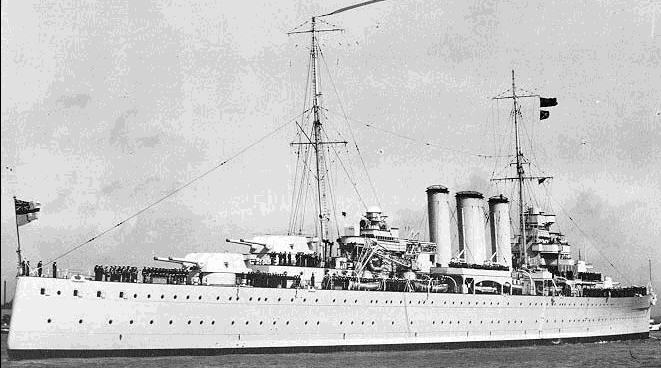 |
| Cornwall, prewar, with
single 4" AA amidships |
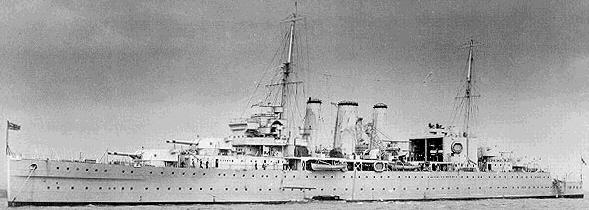 |
| Cumberland, again prewar,
with the large hangar amidships, and stern cutaway aft |
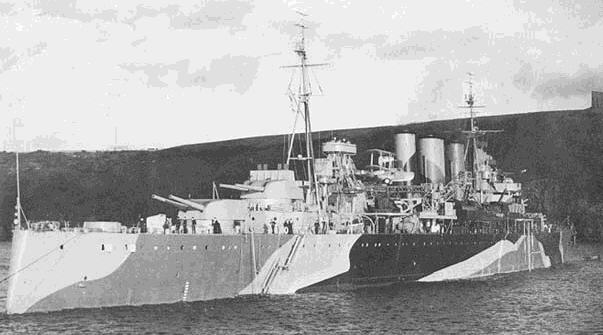 |
| Two shots of Kent, in
1941. Note Amphibian ( Walrus ) on catapult and twin
4" AA amidships. Who knows what the stucture on the
hill is? |
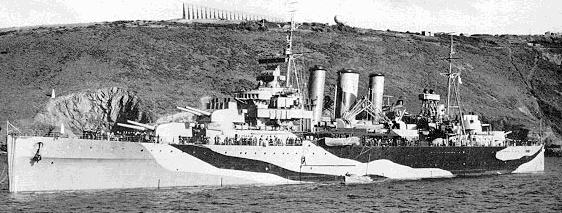 |
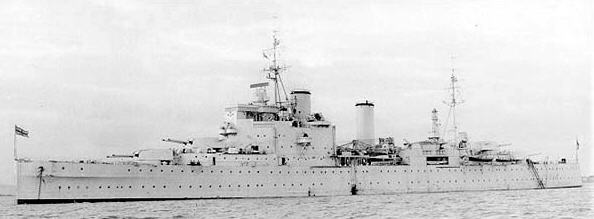 |
| London, as she was
rebuilt, like a Crown Colony, in 1946 |
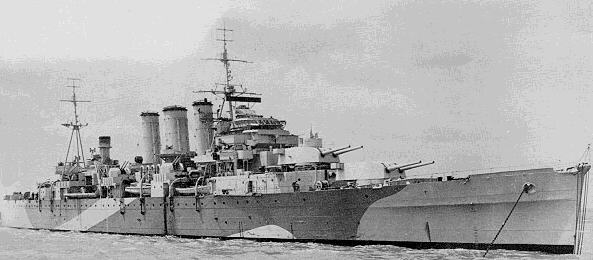 |
| Norfol, in 1943. AA
amidships are twin 4" and single gun on B turret is
a 20mm Oerlikon |
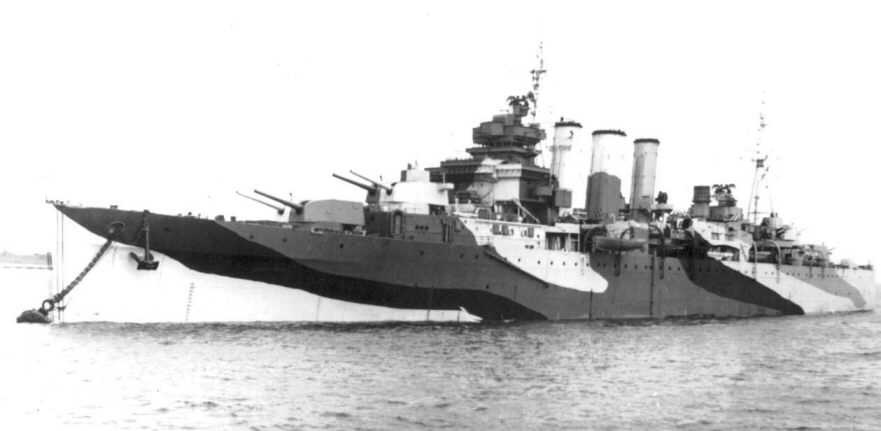 |
| Shropshire, in Plymouth.
SW.273 series radar is on searchlight tower, again 20mm
AA is mounted on "B" turret |
| |
| The County
class of heavy cruisers were built in 3 distinctive
sub-classes, the Kent, London and the Dorsetshire classes. |
Immediately after World War I Great Britain,
like the other major powers, considered building very large,
long-ranged cruisers with a heavy armament, but after the
Washington Treaty limits had been set a new design was prepared
to comply with them.
The "Counties" were designed for Pacific operations
(this being considered as the most likely area of conflict in the
1920s) and they had excellent range and high freeboard as well as
a strong and durable hull. Although the number of guns was less
than those mounted in most foreign contemporaries, the higher
rate of fire of the "Counties’" power-worked twin
turrets more than compensated for this.
Much ill-informed criticism was levelled at these excellent
ships, but although some foreign contemporaries made less attempt
to comply with treaty limitations none could compare with the
strength, seaworthiness, habitability or weight of fire of the
"Counties". Iterestingly, although RN ship's guns
tended to lack elevation, the 8" L/50 of these ships could
elevate to the incredible ( and useless ) 70°, making for a very
complicated mount and ammuntion feed system.
The first group, the "Kent" Class (which also included Australia
and Canberra, built for the RAN) were completed with
external bulges and short funnels, the latter being raised almost
immediately. The other two groups - the "Devonshire"
and "Dorsetshire" Classes - were completed with the
heightened funnels.
The "Devonshire" Class also had better-distributed
armour than the "Kents", the bridge was 15 feet further
aft, and they had internal bulges. The "Dorsetshire"
Class were basically similar to the "Devonshires", with
a less bulky bridge structure.
The "Kent" Class were reconstructed between 1935 and
1938, with additional armour being installed and the
anti-aircraft armament being improved. It was planned to replace
the after superstructure with a large hangar for 3 amphibians,
but this was done only in Berwick and Suffolk owing
to the imminence of war.
London was almost completely rebuilt from 1939 to 1941
with a block bridge, two funnels, improved AA armament and
redistributed armour. She was intended to be the prototype for
further reconstructions, but was not a success.
Ironically, although the "Counties" were designed for
operations in the Pacific, only the two Australian ships and Shropshire
- presented to Australia to replace Canberra - actually
served in that theatre. The others served in the North and South
Atlantic and Indian Oceans, usually on anti-raider patrols or as
cover or escort for convoys. None ever got to prove their gunnery
superiority over enemy 8" cruisers, although HMAS Australia
severely dealt with French destroyers endeavouring to escape from
Dakar.
Suffolk and Norfolk both took part in the hunt for Bismarck,
both using radar to shadow the German battleship, and it was Dorsetshire
who administered the coup de grace with torpedoes after Rodney
and King George V had reduced her to a blazing wreck.
The only other really notable achievement by one of the
"Counties" was the sinking of the German disguised
raider Atlantis by Devonshire on 22 November 1941,
and Cumberland showed up when the Graf Spee was in
Montevideo, leading to errenous reports that Malaya, Ark Royal
and Renown were in the area. ( Despite the fact Malaya
was in drydock in Gibraltar! )
Post-war the "Counties" were hastily paid off and
scrapped, being very manpower-intensive. Only Cumberland
and Devonshire survived for any period, the former as a
trials ship and the latter as a training ship.
| Individual
Specification |
| Name |
Pennant |
Commisioned |
Builders |
Details |
| Berwick |
C? |
15 Feb. 1928 |
Fairfield |
Paid off 1946. Broken up, 1948 |
| Suffolk |
C? |
31 May 1928 |
Portsmouth RDY |
Paid off 1946. Broken up, 1948 |
| Cornwall |
C? |
8 May 1928 |
Devenport RDY |
Sunk 5 April 1942 |
| Cumberland |
C57 |
23 Feb. 1928 |
Vickers Armstrong |
Paid off 1946. Reserve 1946-51.
Trials 1951- 59. Broken up, 1959 |
| Kent |
C? |
25 Jun. 1928 |
Chatham RDY |
Paid off 1946. Reserve 1946-47.
Broken up, 1948 |
| |
|
|
|
|
| Dimensions |
Net displacement |
9750 tonnes |
Length |
630" |
| Gross
displacement |
13450 tonnes |
Beam |
68.25" |
| Load |
3700 tonnes |
Draught |
16.25" |
| |
|
|
|
|
| Performance &
Propulsion |
| Range |
3100 miles @ 31.5 knots, 13300
miles @ 12 knots |
Speed |
31.5 kts |
| Propulsion |
8 x Admiralty 3-drum boilers, 4 x
Parsons steam turbines ( Brown & Curtis Berwick)
@ 80000 hp |
| |
|
|
|
| Armament,
Armour & Complement |
| Complement |
685 Officers & Ratings |
Aircraft |
1 Supermarine Walrus ( 1930 - ) |
Armament
1939 |
- Gun
- 4 x
2 x 8" / 50 Mk.8
- 4 x
1 x 4" / 45 QF Mk.5 HA Early
- 4 x
2 x 4" / 45 QF Mk.16 HA Later
- 2 x
4 x 40 mm 2 pdr Pom-Pom
AA
- 2 x
4 x 0.5" MG"s
- Torpedo
- 2 x
4 x 21" tubes Later, Kent
only
|
Armour |
- 4.5"
main belt
- 1.375"
deck
- 1" -
4" magazines
- 1"
bulkheads
- 4"
Boiler rooms
- 3"
Conning Tower
|
Armament
1941 |
- Gun
- 3 x 2 x 8"
- 4 x 2 x 4"
- 4 x 4 x 2pdr pom-poms
- 6-12 x 40mm
- 8-14 x 20mm
|
| |
|
|
|
| Service Histories |
| Berwick |
- Home Fleet 1939-45
- paid off 1946
- broken up at Blyth, 1948
|
| Cornwall |
- Home Fleet 1939-41
- Eastern Fleet 1941-42
- sunk by aircraft from Japanese
carriers Akagi, Soryu and Hiryu
off Ceylon, 5 April 1942
|
| Cumberland |
- South Atlantic 1939-41
- Home Fleet Oct. 1941-Jan. 1944
- 4th Cruiser Squadron
Eastern Fleet Jan. 1944-Oct. 1945
- returned to UK 12 Nov. 1945
- trooping duties Jan.-May. 1946
- to reserve Jun. 1946
- converted to trials ships 1949-51
- all original armament
removed
- lattice masts replaced
tripods
- new twin 6" turret
- new automatic twin 3"
gun fitted
- paid off January 1959
- broken up at Newport 1959
|
| Kent |
- Home Fleet 1939-45
- paid off 1946
- broken up at Troon 1948
|
| Suffolk |
- Home Fleet 1939-42 - hunt for Bismarck
May 1941
- Eastern Fleet 1942-45
- paid off 1946
- broken up at Newport 1948
|
| Individual Specification |
|
|
|
| Name |
Pennant |
Commisioned |
Builders |
| London |
C69 |
? Jan. 1929 |
Portsmouth RDY |
| Devonshire |
C39 |
18 Mar. 1929 |
Devonport RDY |
| Sussex |
C? |
12 Sep. 1929 |
Beardmore |
| Shropshire |
C? |
12 Sep. 1929 |
Beardmore |
| |
|
|
|
 |
| HMS London early war. For
some reason, aft 0.5" AA was on "Y"
turret, where it would have a smaller fire arc, suffer
blast damage and block "X" turret fire arc. Aft
HA.DCT was on a lattice mast © Andrew Arthur |
| Dimensions |
Net displacement |
9750 tonnes |
Length |
633" |
| Gross
displacement |
13220 tonnes |
Beam |
66" |
| Load |
3280 tonnes |
Draught |
17" |
| |
|
|
|
|
| Performance &
Propulsion |
| Range |
2930 miles @ 31 knots, 12500 miles
@ 12 knots |
Speed |
32.25 kts |
| Propulsion |
8 x Admiralty 3-drum boilers, 4 x
Parsons steam turbines @ 80000 hp |
| |
|
|
|
| Armament,
Armour & Complement |
| Complement |
850 Officers & Ratings |
Aircraft |
1 Supermarine Walrus |
Armament
1939 |
- Gun
- 4 x
2 x 8" / 50 Mk.8
- 4 x
1 x 4" / 45 QF Mk.5 HA AAEarly
- 4 x
2 x 4" / 45 QF Mk.5 HA AALater
- 2 x
4 x 2 pdr Pom-Pom AA
- 4 x
1 x 2 pdr Pom-Pom AA
- 2 x
4 x 0.5" MG AA
- Torpedo
|
Armour |
- 4.5"
main belt
- 1.375"
deck
- 1" -
4" magazines
- 1"
bulkheads
- 3.5"
Boiler rooms
|
Armament
1945 |
- Gun
- 3 x 2 x 8" / 50 Mk.8
- 4 x
2 x 4" / 45 QF Mk.5 HA AA
- 4 x 4 x 2pdr pom-pom AA
- 6-12 x 40mm Bofors AA
- 8-14 x 20mm Oerlikon AA
|
Armament
London |
- Gun
- 4 x 2 x 8"/50-cal
- 4 x
2 x 4" / 45 QF Mk.5 HA AA
- 2 x 8 x 2pdr pom-pom AA
- 10 x 1 x 20mm Oerlikon AA
|
| |
|
|
|
| Service Histories |
| Devonshire |
- Home Fleet 1939-41 - Norwegian
campaign Apr.-May 1940
- South Atlantic 1941-42 - sank
armed raider Atlantis 22 Nov. 1941
- Eastern Fleet 1942-43 - Diego
Suarez operation May 1942; Home Fleet 1944-45
- repatriation duties 1945-46
- refitted as Cadet Training Ship
Sep. 1946-Apr. 1947
- all 8" except ‘A’
turret removed
- two twin 4" mounts
removed
- two pom-poms removed
- classrooms added in place
of ‘B’ and ‘X’ turrets
- additional superstructure
added amidships
- oldest ship present at Coronation
Spithead Review 15 June 1953
- placed in reserve Oct. 1953
- arrived at Newport 12 December
1954 to be broken up.
|
| London |
- To Home Fleet on completion of
reconstruction 1941
- covered convoys to Russia 1941-43
- Eastern Fleet 1943-45
- refitted 1946
- badly damaged by Communist Chinese
gunfire during rescue of HMS Amethyst on Yangste
River 21 Apr. 1949
- to reserve end-1949
- broken up 1950.
|
| Shropshire |
- Anti-raider patrols and ocean
convoy escort 1939-43
- transferred to RAN 25 June 1943.
|
| Sussex |
- Home Fleet 1939-43
- Eastern Fleet 1943-45 - escorted
convoy carrying 5th Indian Division to
Singapore Sep. 1945
- repatriation duties 1945-46
- to reserve 2 February 1949
- broken up at Dalmuir 1955.
|
| Individual
Specification |
| Name |
Pennant |
Commisioned |
Builders |
Details |
| Norfolk |
C78 |
30 Apr. 1930 |
Fairfield |
Paid off 1949, Broken up 1950 |
| Dorsetshire |
C? |
30 Sep. 1930 |
Portsmouth RDY |
Sunk 5 April 1942, with Cornwall
by Japanese carrier aircraft |
| |
|
|
|
|
 |
| 1:600 HMS Dorsetshire, as
she was on the outbreak of war, with quad 0.5" MG AA
abreast #2 funnel, octuple pom-pom behing bridge and a
HA.DCT aft for twin 4" AA amidships. © Andrew
Arthur |
| Dimensions |
Net displacement |
9900 tonnes |
Length |
633" |
| Gross
displacement |
13290 tonnes |
Beam |
67" |
| Load |
3390 tonnes |
Draught |
17" |
| |
|
|
|
|
| Performance &
Propulsion |
| Range |
2930 miles @ 31 knots, 12500 miles
@ 12 knots |
Speed |
32.3 kts |
| Propulsion |
8 x Admiralty 3-drum boilers, 4 x
Parsons steam turbines @ 80000 hp |
| |
|
|
|
| Armament,
Armour & Complement |
| Complement |
685 Officers & Ratings |
Aircraft |
1 Supermarine Walrus |
Armament
1939 |
- Gun
- 4 x
2 x 8" / 50 Mk.8
- 4 x
1 x 4" / 45 QF Mk.5 HA AAEarly
- 4 x
2 x 4" / 45 QF Mk.16 HA AALater
- 2 x
8 x 2 pdr Pom-Pom
AA
- 2 x
4 x 0.5" MG AA
- Torpedo
|
Armour |
- 4.5"
main belt
- 1.375"
deck
- 1" -
4" magazines
- 1"
bulkheads
|
Armament
1945 |
- Gun
- 4 x
2 x 8" / 50 Mk.8
- 4 x
2 x 4" / 45 QF Mk.16 HA AA
- 2 x 8 x 2pdr pom-pom AA
- 2 x 4 x 2pdr pom-pom AA
- 6-12 x 40mm Bofors AA
- 8-14 x 20mm Oerlikon AA
|
| |
|
|
|
| Service Histories |
| Dorsetshire |
- Home Fleet 1939-41 - finished off Bismarck
with torpedoes 26 May 1941
- to Eastern Fleet late 1941
- sunk by aircraft from Japanese
carriers Akagi, Soryu and Hiryu
off Ceylon 9 April 1942.
|
| Norfolk |
- Home Fleet 1939-45
- shadowed Bismarck May 1941
- covered Russian convoy during
Battle Of North Cape 26 Dec. 1943
- paid off 1949
- broken up at Newport 1950
|















